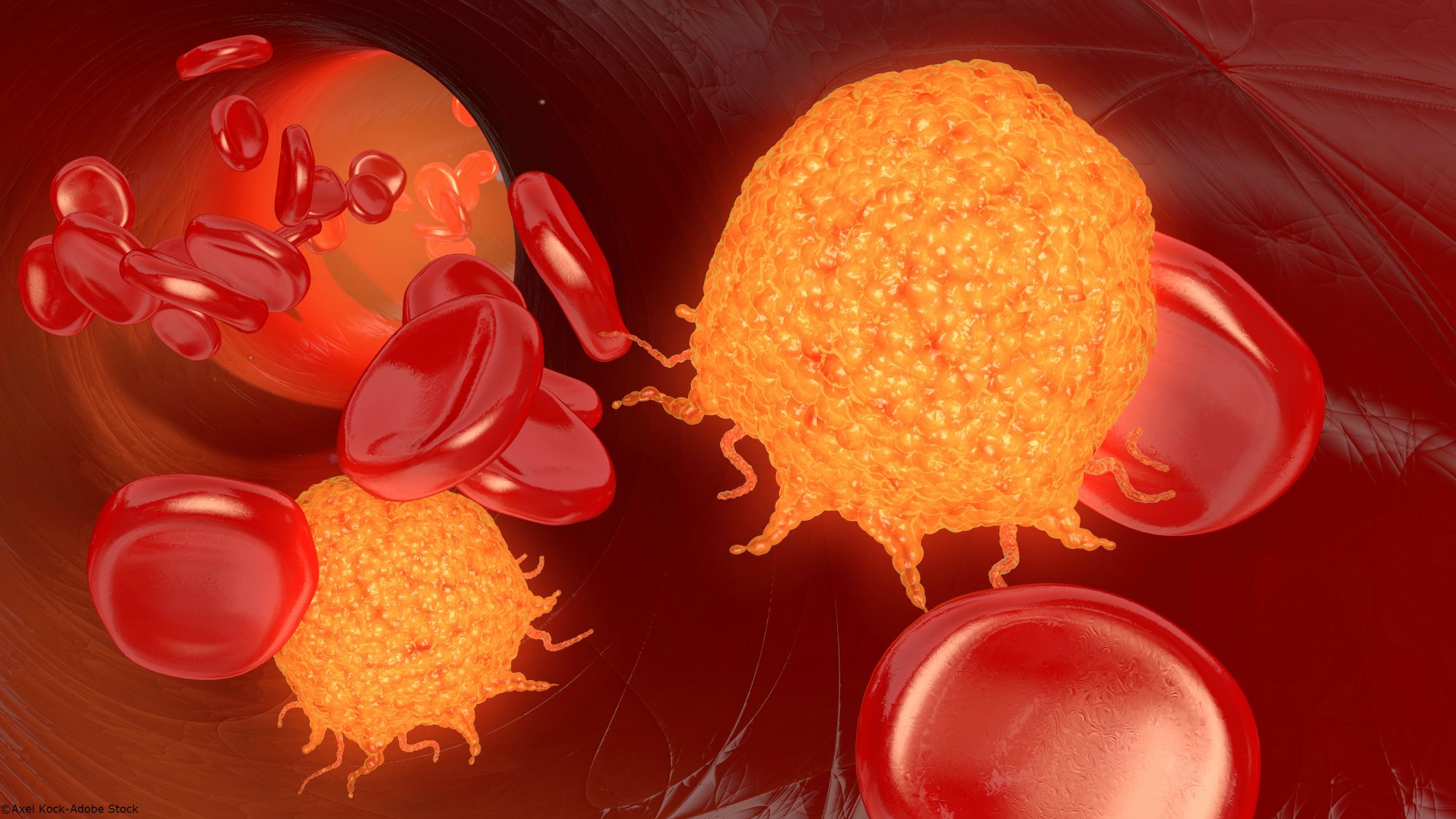Tambiciclib Displays Survival Benefit, Enhanced ORR in AML-MRC
Tambiciclib was well tolerated in patients with acute myeloid leukemia with myelodysplastic-related changes, and no new safety signals were observed.
Cohort 3 data, comprising 13 patients with relapsed/refractory AML who progressed following venetoclax-based therapies evaluable for efficacy, showed a median OS of 8.8 months, including a median OS of 8.9 in patients with AML-MRC.

Tambiciclib (SLS009), a highly selective CDK9 inhibitor, displayed positive survival and response data in a small cohort of patients with relapsed/refractory acute myeloid leukemia with myelodysplastic-related changes (AML-MRC) or myelomonocytic AML in the ongoing phase 2 trial (NCT04588922) of SLS009, according to a press release from the developers, SELLAS Life Sciences Group, Inc.1
Cohort 3 data, comprising 13 patients with relapsed/refractory AML who progressed following venetoclax (Venclexta)-based therapies evaluable for efficacy, showed a median overall survival (OS) of 8.8 months, including a median OS of 8.9 in patients with AML-MRC. Furthermore, the overall response rate (ORR) in cohort 3 was 46%, including 67% in patients with AML-MRC and 75% for patients with myelomonocytic AML, exceeding the target of 20%.
Additional findings revealed that among patients with ASXL1 mutations, 67% (n = 4/6) responded; among those with RUNX1 mutations, 60% (n = 3/5) responded; and among those with TP53 mutational status, 33% (n = 1/3) responded. In 3 patients with adverse karyotypes, 1 (33%) had responded.
“The remarkable results from cohort 3 of the ongoing phase 2 trial reinforce the potential of [tambiciclib] to transform outcomes for these [patients with] heavily pretreated AML,” Angelos Stergiou, MD, ScD hc, president and CEO of SELLAS, said in the news release.1 “Not only have we observed unprecedented survival benefits, but the high response rate underscores the therapy’s efficacy profile.”
Among the 14 patients enrolled and treated with tambiciclib plus venetoclax/azacitidine (Vidaza), 10 had AML-MRC and 4 had myelomonocytic phenotype. This phenotype, which has historically shown inferior responses to venetoclax-based therapies, is thought to be more dependent on the MCL1 anti-apoptotic protein than the BCL2 anti-apoptotic protein. Within this cohort, the median age was 71 years (range, 35-89), the median number of prior lines of therapy was 1 (range, 1-6), and all patients had adverse risk cytogenetics per European Leukemia Network 2022 guidelines.
The single-arm, open-label, phase 2 trial evaluating the safety, tolerability, and efficacy of tambiciclib enrolled patients with AML to receive weekly doses of 60 mg or 45 mg of the agent or biweekly doses of 30 mg of tambiciclib plus venetoclax/azacitidine. The trial was expanded to include a cohort assessing patients with ASXL1-mutated AML and a cohort with myelodysplasia-related molecular abnormalities other than ASXL1.
The current coprimary end points of the study include dose-limiting toxicities and the incidence of adverse events.2 Secondary end points include area under the plasma concentration-time curve, ORR, duration of response, progression-free survival, and OS.
Tambiciclib was well tolerated, with no new safety signals observed. Additionally, the regimen continues to be considered safe in additional patients enrolled to date. The phase 2 trial is ongoing in expansion cohorts 4 and 5 in patients with ASXL1 mutations and mutations/cytogenic changes other than ASXL1, respectively.
“The data reveal that [patients who had] relapsed [disease] or [disease] refractory to venetoclax-based regimens receiving 30 mg [biweekly] achieved a [median] OS of 8.8 months, far surpassing the historical benchmark of 2.5 months,” added Stergiou.1 “Additionally, the therapy demonstrated a 67% ORR in patients with AML-MRC and 46% in all evaluable patients, significantly exceeding the targeted 20% ORR. With responses seen across different genetic mutations, this approach could be transformational for many underserved patients. We are continuing to explore SLS009's potential in expansion cohorts to further validate its potential to address critical unmet medical needs.”
References
- SELLAS announces positive overall survival in cohort 3 from the ongoing phase 2 trial of SLS009 in r/r AML. News release. SELLAS Life Sciences Group. April 8, 2025. Accessed April 9, 2025. https://tinyurl.com/5n85yue9
- Study of SLS009 (formerly GFH009) a potent highly selective CDK9 inhibitor in patients with hematologic malignancies. ClinicalTrials.gov. Updated September 19, 2024. Accessed April 9, 2025. https://tinyurl.com/3j558dxj